Turtle species exhibit a variety of incredible adaptations that allow them to live through cold weather conditions. Winter survival strategies vary by region but, as ectotherms that require external sources of heat to regulate their metabolism, most turtles alter their behavior to survive the winter months.
I recently took a close look at a North American turtle with an incredible ability to survive through months under ice without food or oxygen, the painted turtle. Here are some other adaptations that allow turtles (including tortoises and terrapins) to survive.
I spoke to herpetologists Kurt Buhlmann of the University of Georgia (winner of the 2105 PARC Visionary Leader Award) and Thomas Mohrman of the Nature Conservancy in Mississippi to learn more.
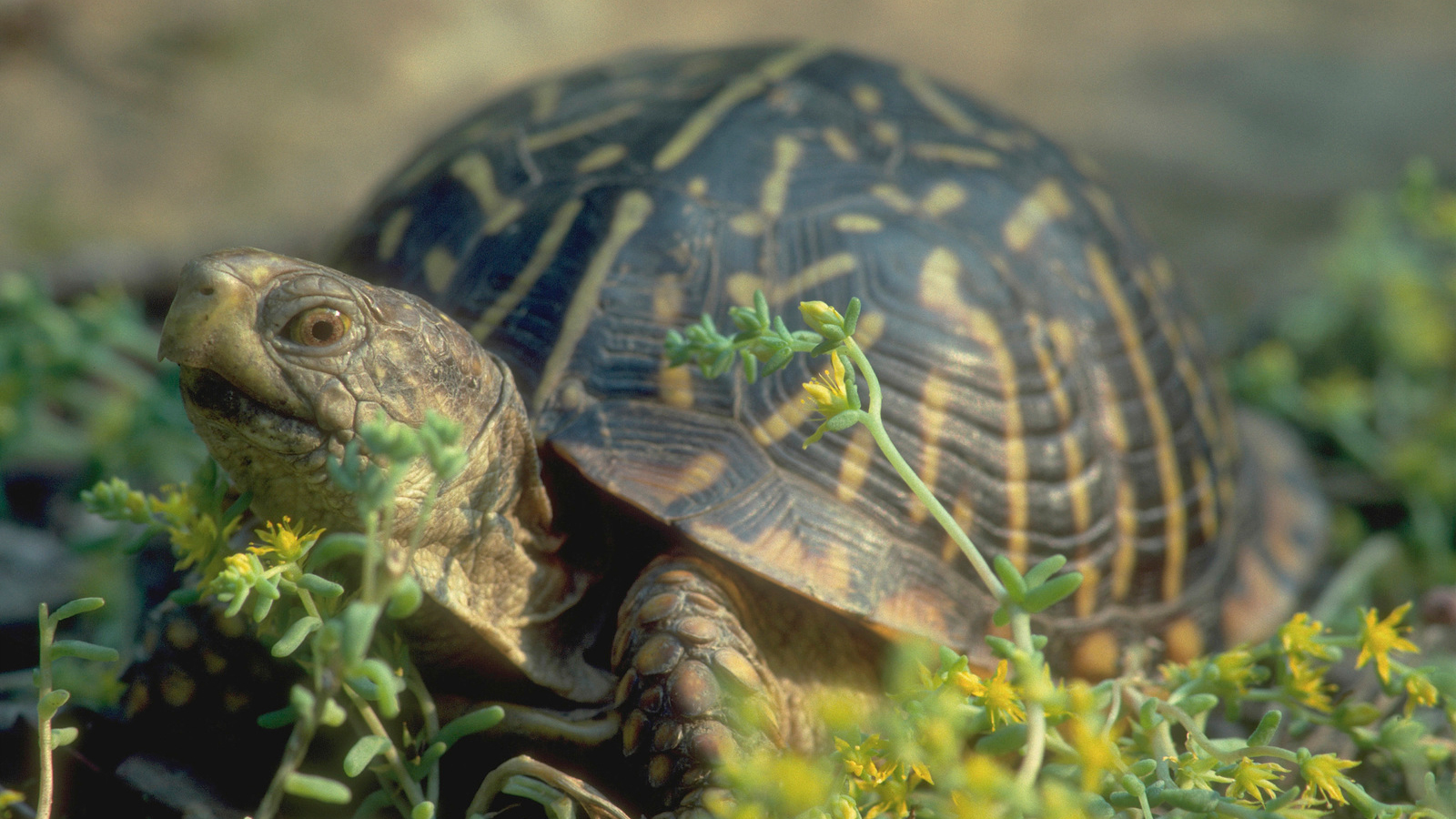
Box Turtles: Buried Alive
The box turtle is among the most widespread turtles in North America with subspecies that range across most of the lower 48, including northern states like Maine and Wisconsin. Studies of two species, the ornate box turtle (Terrapene ornata ornata) and eastern box turtle (Terrapene carolina carolina) have shown that box turtles bury themselves and enter a state of torpor.
One laboratory study has shown that adult and hatchling box turtles can recover fully from freezing for 24 hours at around -3°C; some hatchlings in this experiment died and all died when frozen at temperatures below -3°C (Costanzo 1995). In the field, an Iowa study that logged the carapace temperatures of ornate box turtles, recorded two that survived freezing temperatures (one was dehydrated and weak when researchers dug her up to see if she had survived, but she soon resumed normal function – Bernstein 2005).
This limited freeze tolerance could help a turtle to survive an unexpectedly deep freeze, but turtles have been shown to bury themselves below the frost line by preference – in a Wisconsin study, turtles were found an average of 70 cm below the surface. The soil is loose around them, so they can breathe and meet their oxygen requirements (which are limited because of their slowed metabolism). In southern states, turtles don’t typically need to bury themselves as deep and might simply bury themselves in the leaf litter.
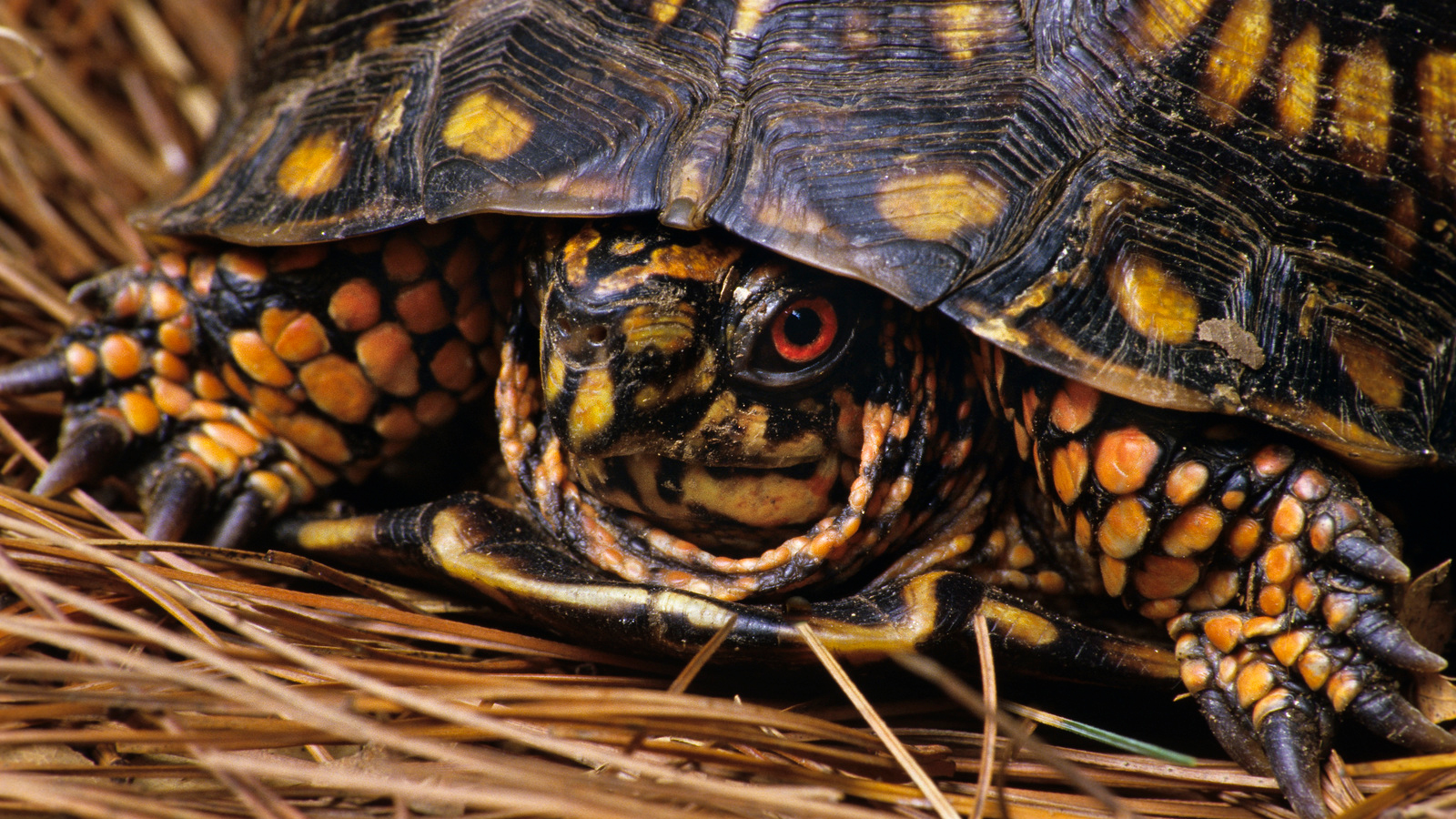
“They don’t make a burrow like a tortoise,” Buhlmann explains, “they corkscrew their way down into the soil slowly over time.”
Winter Conservation Needs
In a Nebraska study, ornate box turtles preferred to overwinter in upland prairies – likely because they are easier for the turtle to dig in and less likely to freeze than lowland meadows and prairies. Protecting appropriate winter habitat is a crucial component of turtle conservation.
Please also remember to watch out for the turtles that might be hiding in your yard.
“In South Carolina box turtles hibernate in a forest ravine, often in gardens or leaf piles,” Buhlmann says. “If you have a big enough leaf pile, it might attract turtles. Some are killed when people burn the leaf pile that they raked up. Be aware and check the leaf pile before you burn it. They’ll be down in the wet leaves at the bottom.”
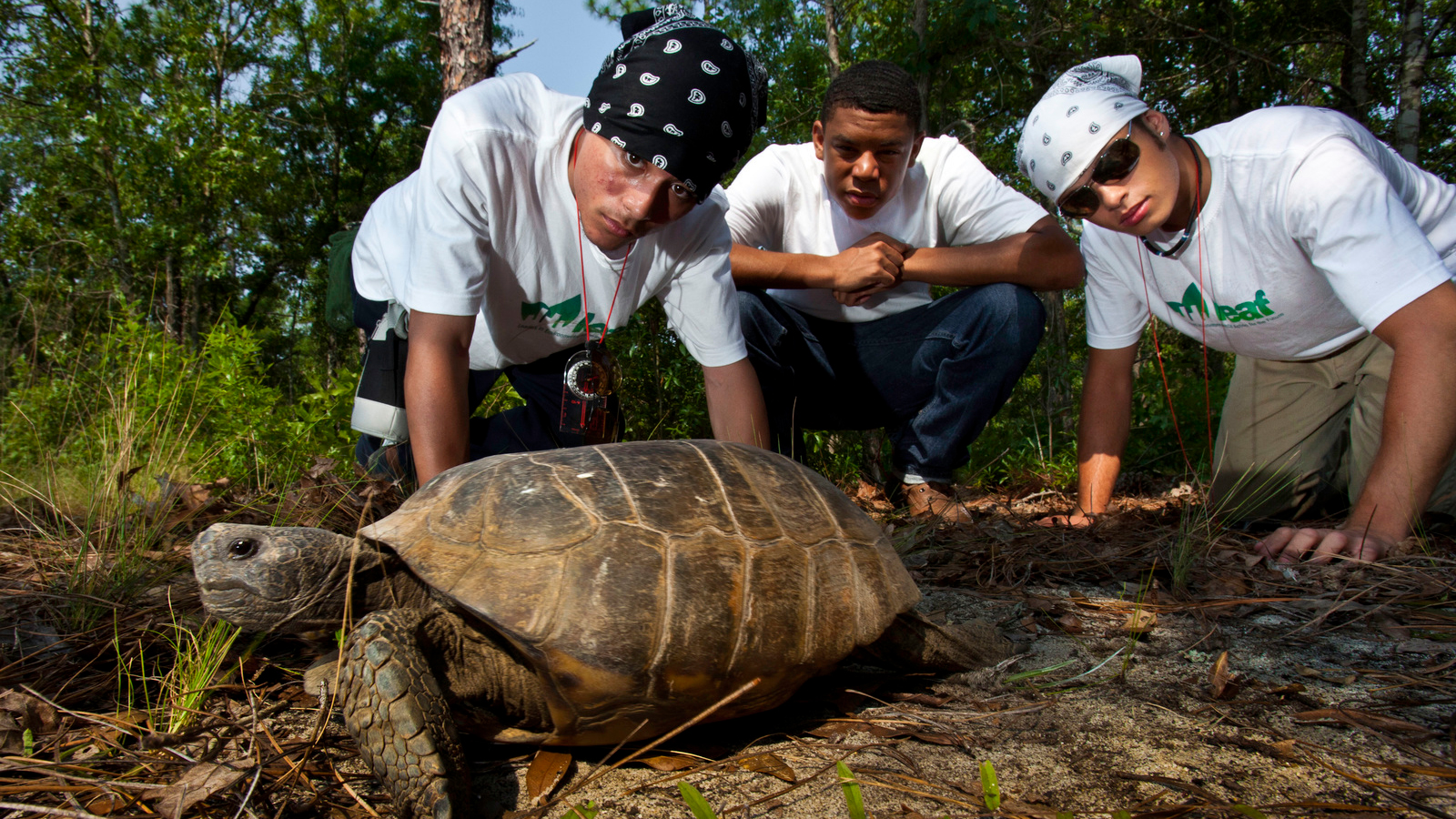
Gopher & Desert Tortoises: Burrow Builders
I wouldn’t have expected that tortoises in the desert would need to change their habits at all in the winter – I was wrong. It gets cold in the desert on winter nights, not freezing but too cold for a tortoise, so gopher and desert tortoises build burrows. They stay in these burrows through the coldest part of winter, inactive but not hibernating. Some desert tortoises in their northeastern range brumate for more than six continuous months.
Though their metabolism is reduced as their body temperature decreases, tortoises are alert enough that on warm days they can emerge from the burrow and actively bask – in one study of gopher tortoises, half of the turtles emerged to bask at least once (DeGregorio 2012).
Tortoises choose or build hibernacula that allow them to experience very little temperature fluctuation throughout the winter. The temperatures they experience are often lower than the daily high air temperature on the surface, but above the daily low. Gopher tortoise burrows are large enough (up to 6 feet deep and 12 feet back) that they may be able to move around within the burrow (deeper or closer to the surface) depending on the temperature outside.
Tortoises use the burrow similarly for temperature control when it gets too hot in the summer.
“Tortoises come out first thing in the morning and warm up and then have to get out of sun and back in the burrow or they’ll overheat like a cast iron skillet,” Buhlmann says. “Down in the burrow it’s more of a constant temperature all summer long. Even on a cool day they’re active and warm to the touch. They take long time to warm up and a long time to cool down.”

While they spend time in their burrows, tortoises expend little energy and do not need to forage due to their slowed metabolism. Studied tortoises usually do not show a drastic change in body condition over the winter months. The burrows are spacious enough that tortoises have access to plentiful oxygen.
Winter Conservation Needs
The gopher tortoise is one of the most frequently relocated turtles (DeGregorio 2012). Historically they have been relocated to avoid development threats and until recently, most relocated turtles were not monitored. The timing and placement of relocated individuals could be key to ensuring their survival and building new populations.
Survival through overwintering after a relocation provides a good indication of success. Overwintering is a stressful time and tortoises must find habitat that is suitable for building a burrow.
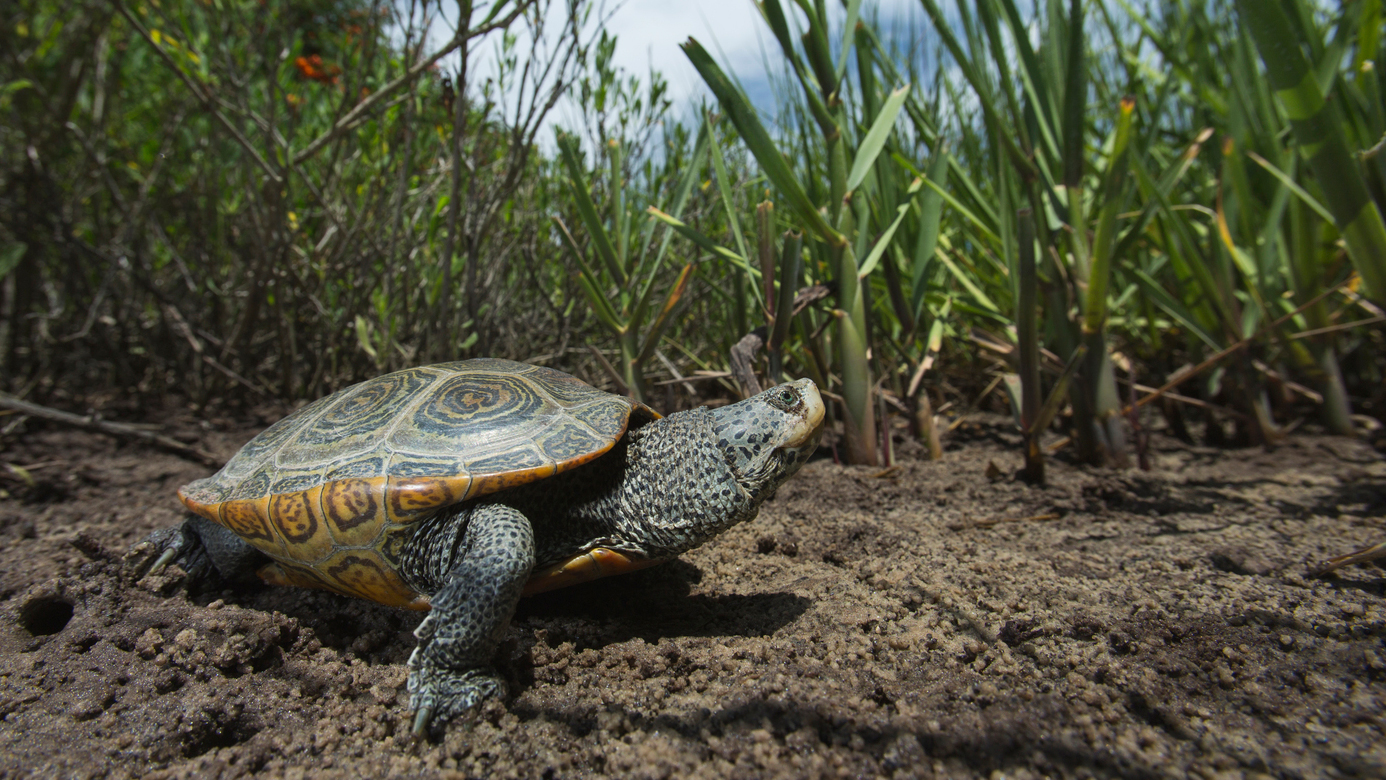
Diamondback Terrapins: Muddy Mounds
The diamondback terrapin (Malaclemys terrapin) lives in brackish water near the ocean. They spend almost all their time in the water; their only land-based activity is nesting. Hatchlings emerge from eggs in the fall, or overwinter in the nest.
They range from the Cape Cod down to the Florida Keys and over to Texas, and how they spend the winter depends in a large part on how far north they live.
“In the south, it’s not full hibernation, but they do hunker down in the mud and slow down their metabolism,” Mohrman explains. “In other parts of their range, they essentially shut down for the most part in the winter. They bury themselves in the mud and come up every once in a while for a breath of air.”
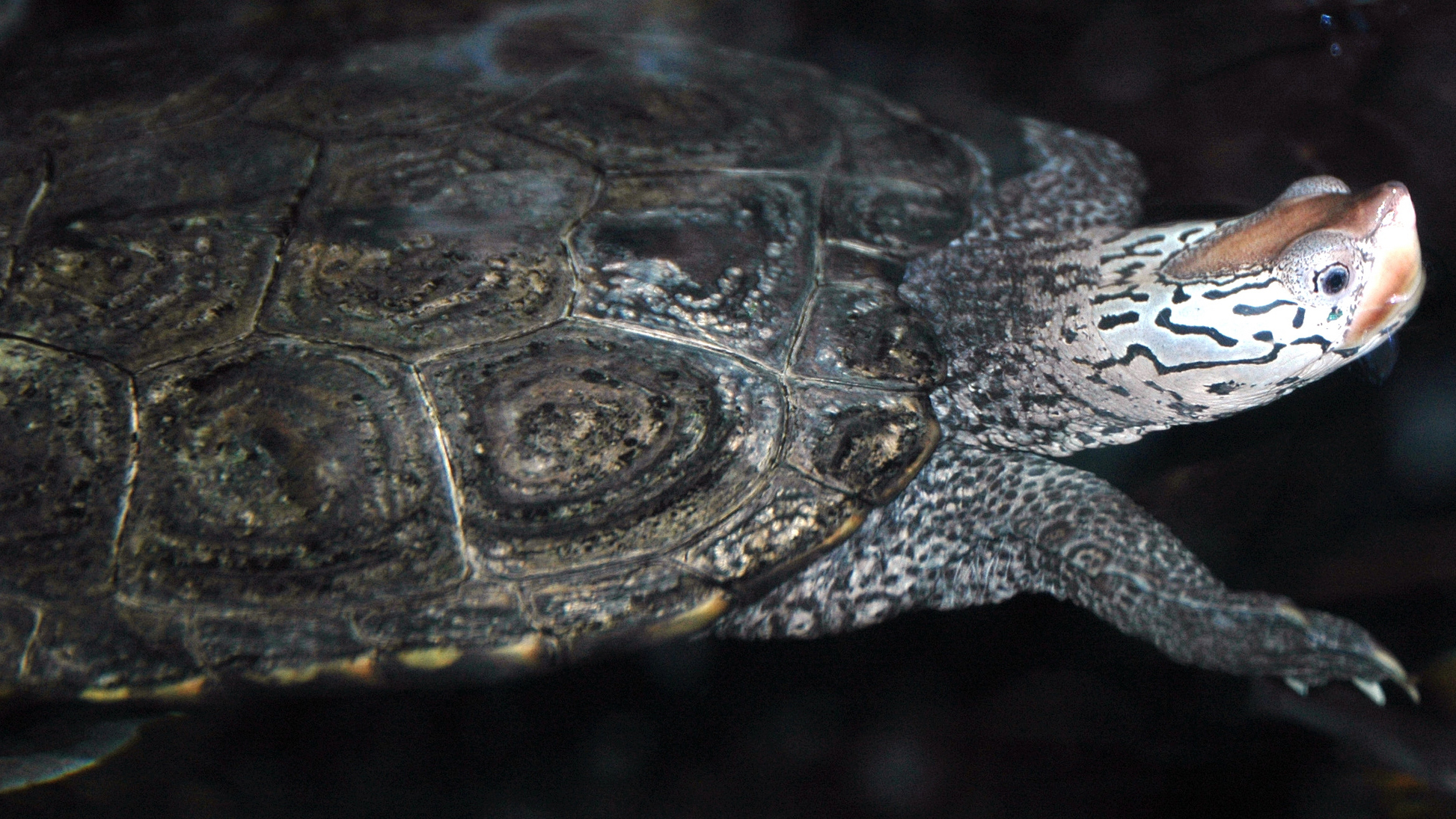
The terrapins don’t bury very deeply in the mud, but they can be under a couple of feet of brackish water. The salt water provides an extra layer of protection from freezing (the risk of freezing is low in salt water below the surface level).
Winter Conservation Needs
Terrapins buried in the mud, under the water are sometimes hit by unwary boats.
“When they’re hibernating there’s a chance for them to get hit by propellers or sucked into dredges or trawls,” Mohrman says. “Be aware that they’re out there and be careful.”
Another important conservation factor for diamondback terrapins is protecting and restoring salt marshes they inhabit so they have a safe place to spend the winter.
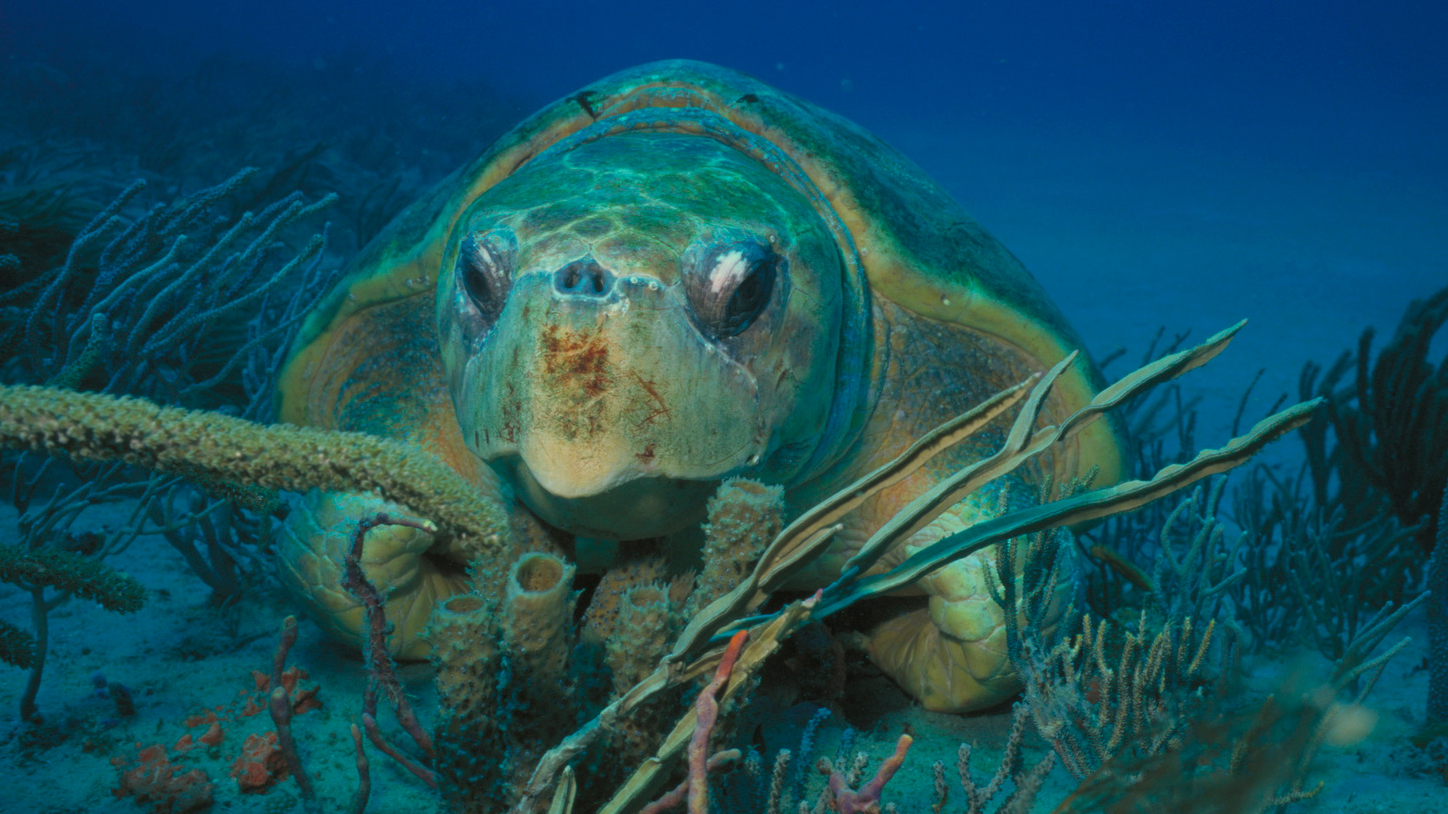
Loggerhead Sea Turtles: ‘Dormant’ Deep Dives
Most sea turtles migrate to warmer waters to survive the winter; however, a recent study has shown that loggerheads may have options (Hochscheid 2007). The study tracked turtles in the Mediterranean and found that some migrated, but others stayed near their summer foraging grounds.
The turtles that stayed in (relatively) colder waters were shown to spend most of their time in dives that lasted 3 hours or longer. Longer dives are typically thought of as “resting dives” — turtles rest on the bottom of the ocean to limit their energy expenditure. Dive times tended to get longer as the water got colder, but the turtles remained active. They surfaced to breathe and foraged if the opportunity arose. The lowest recorded water temp was 15°C. A different study (Broderick 2007), recorded the longest dive of by a loggerhead overwintering in the Mediterranean — 10.2 hours!
Most overwintering dives are aerobic – the turtles breathed often enough that their body didn’t switch to anaerobic (i.e. without oxygen) means of energy production. However, some of the longest dives are anaerobic & loggerhead turtles can survive three or more hours of anoxia.
Like many land and freshwater turtles, loggerhead sea turtles don’t truly hibernate, but they do reduce their level of activity to conserve energy. They are more active than most terrestrial and freshwater turtles in that they do continue to eat throughout the winter.
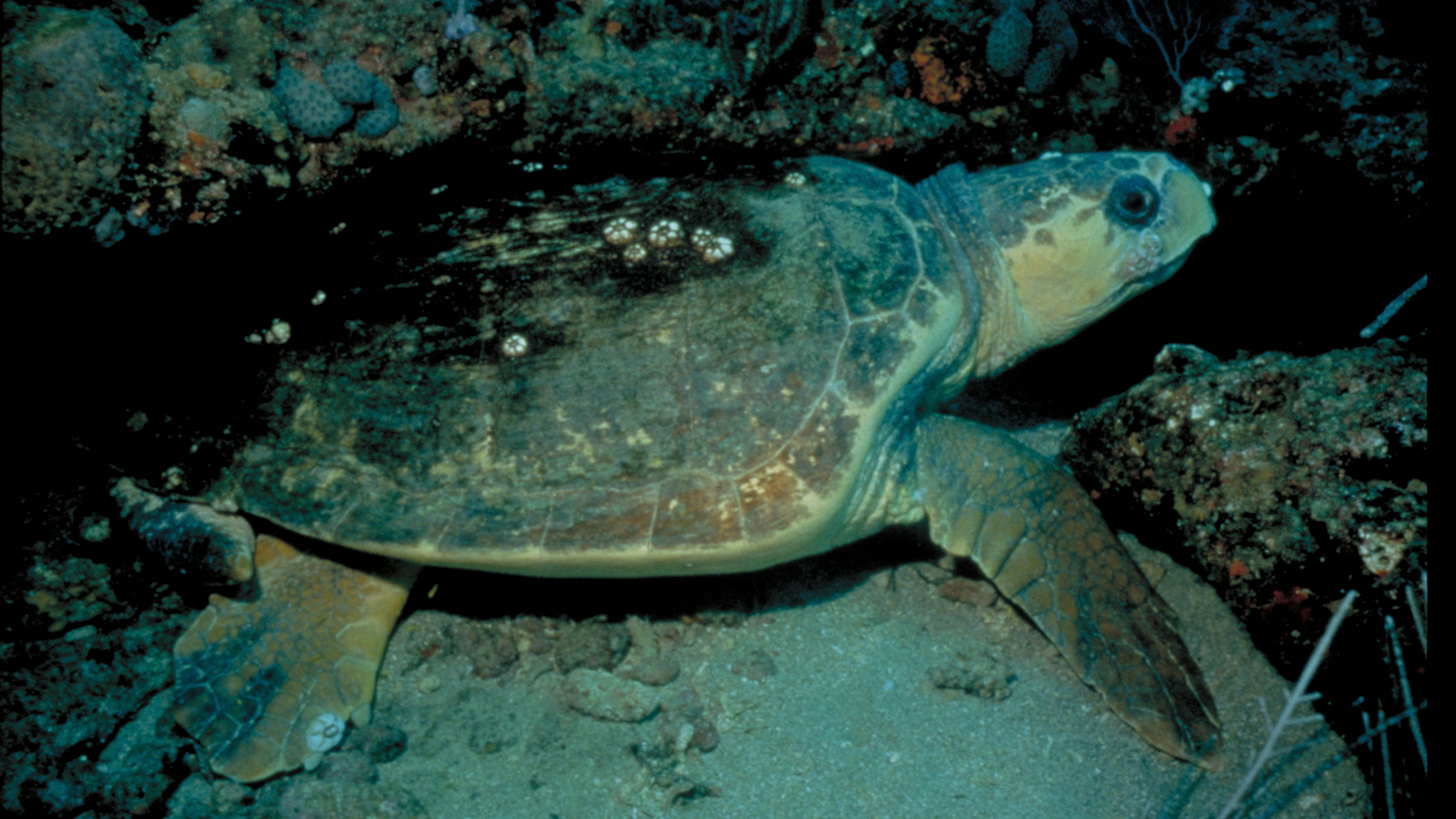
Winter Conservation Needs
Habitat conservation or regulation is the primary need for overwintering sea turtles and their habitat needs vary by region. For instance, turtles overwintering in the Mediterranean prefer shallow water near the shore, because this is the warmest water available. In contrast, overwintering loggerheads near North America stay in deeper waters, near the Gulf Stream, which provides more warmth than shallow water in that region (Hawkes 2007).
Sea turtles, including loggerheads, are also susceptible to “cold stunning” when they are exposed to prolonged cold water temperatures. This is especially common in the shallow waters of the northeastern US where water temperatures can drop suddenly. If you see a cold stunned turtle, do not put it back in the water, contact the NOAA Sea Turtle Stranding and Salvage Network for assistance.
Mysteries of Turtle Torpor
Questions remain about the winter habits of turtles. How do they know when to go into a torpor? How do they know when to emerge? Studies have shown that timing of “hibernation” varies by region, by year, and can even vary significantly for individual turtles in the same region in the same year. The timing has not been tied to air or ground temperatures or to the time of year.
You can help track what’s happening with your local turtles by reporting sightings to HerpMapper.
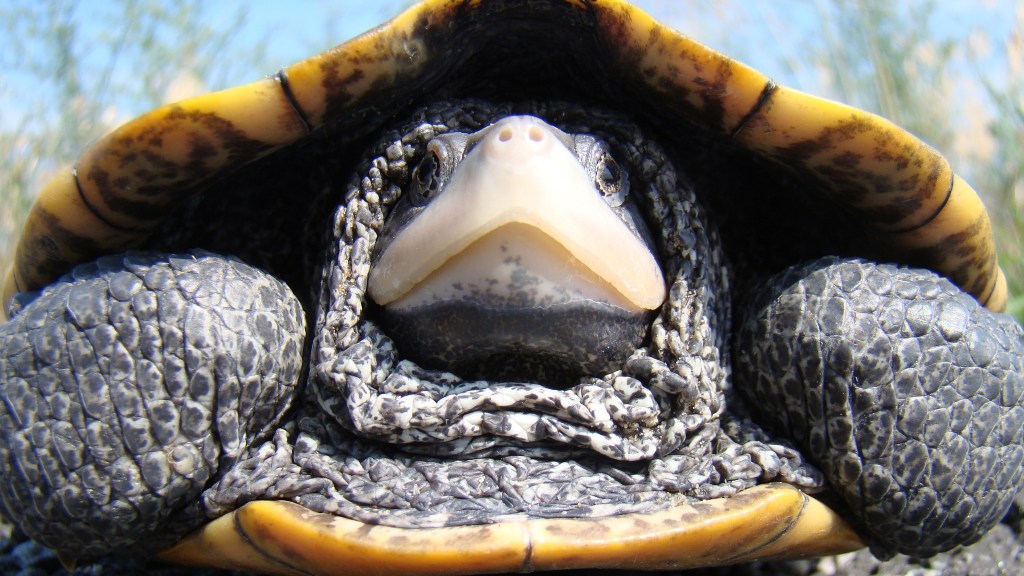



Informative article. FYI: the temperatures at night in the high Sonoran desert in the winter frequently drop below freezing (oftentimes significantly below freezing). The desert tortoises I have observed have adapted quite well to this environment via their burrows and other adaptations. They are truly fascinating creatures. Thank you for the info you are sharing!
Very interesting! Why are turtles so fascinating I wonder?
For me it’s partly the shell – such a unique feature. I also find that when I start to research any creature even the ones that seemed “dull” are far more fascinating than I expected.